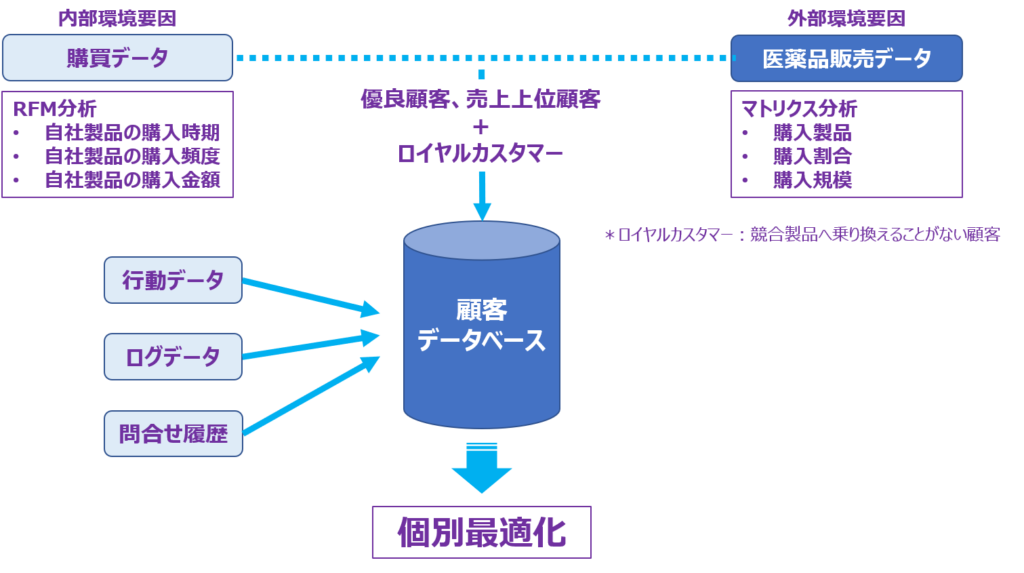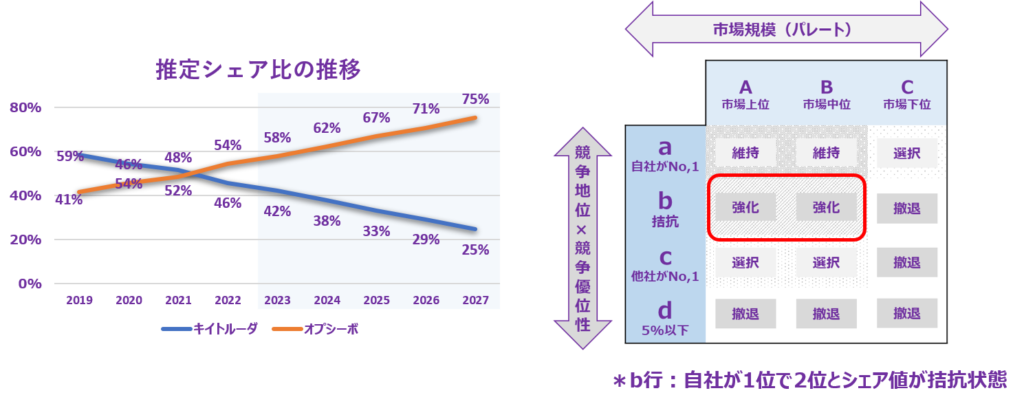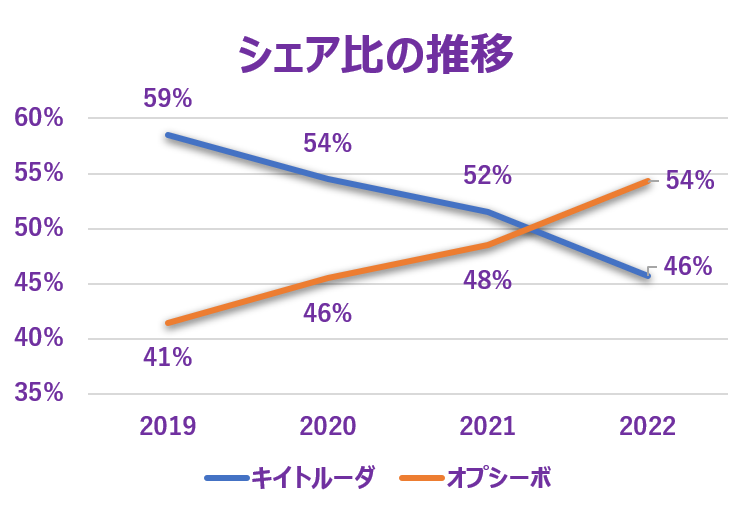
人口減少や社会保障費の抑制により国内医薬品市場が縮小することで、市場環境はレース型競争市場からゲーム型競争市場へと転換しており、そのために既存顧客を競合製品に取られるリスクが高まっています。
そのような背景から、顧客とのエンゲージメントを高め、維持するための手法としてCRMが生まれました。
不特定多数の人を対象とする従来のマスマーケティングではなく、顧客の属性に合わせてマーケティングを行う「One to Oneマーケティング」という考え方です。
CRMが顧客分析に用いるデータの一つに購買データがあります。
購入時期、購入頻度、購入金額のRFM分析により、全ての指標において水準が高い顧客は優良顧客といわれます。
顧客分析の目的は自社製品から競合製品にスイッチするリスクの低いロイヤルカスタマーを維持、育成することです。
「優良顧客」や「売上上位顧客」はロイヤルカスタマーに近い顧客ではありますが、混同しないようにしなければなりません。
ロイヤルカスタマーを維持・育成していくためには、顧客の中から適正なロイヤルカスタマーを選択する必要があります。
なぜならロイヤルカスタマーとは競合製品へ乗り換えることがない顧客であり、その選択には競合製品の要因を加味する必要があるからです。
CRMにマトリクス分析を加えれば、適正なロイヤルカスタマーを選択し、CRMによる個客最適化を通じてエンゲージメント構築のプロセスが完成します。
“Why should matrix analysis be combined with CRM?”
Due to population decline and the need to control social security expenses, the domestic pharmaceutical market is shrinking. As a result, the market environment is shifting from a race-type competitive market to a game-type competitive market, increasing the risk of losing existing customers to competing products.
Against this backdrop, CRM has emerged as a method to enhance and maintain engagement with customers.
Rather than traditional mass marketing targeting a large number of people, CRM follows the concept of “One to One Marketing,” which involves conducting marketing based on customer attributes.
One of the data used for customer analysis in CRM is purchase data. Through RFM analysis, which includes purchase timing, frequency, and amount, customers with high levels in all indicators are considered best customers.
The purpose of customer analysis is to maintain and cultivate loyal customers who have a low risk of switching from your products to competing products.
While “best customers” and “top revenue customers” are similar to ”loyal customers”, it is important not to confuse them.
To maintain and cultivate loyal customers, it is necessary to select appropriate loyal customers from among the customer data base. This is because loyal customers are those who never switch to competing products, and the selection process needs to consider factors related to competing products.
By incorporating matrix analysis into CRM, it becomes possible to select the appropriate loyal customers and complete the process of building engagement through customer optimization using CRM.











